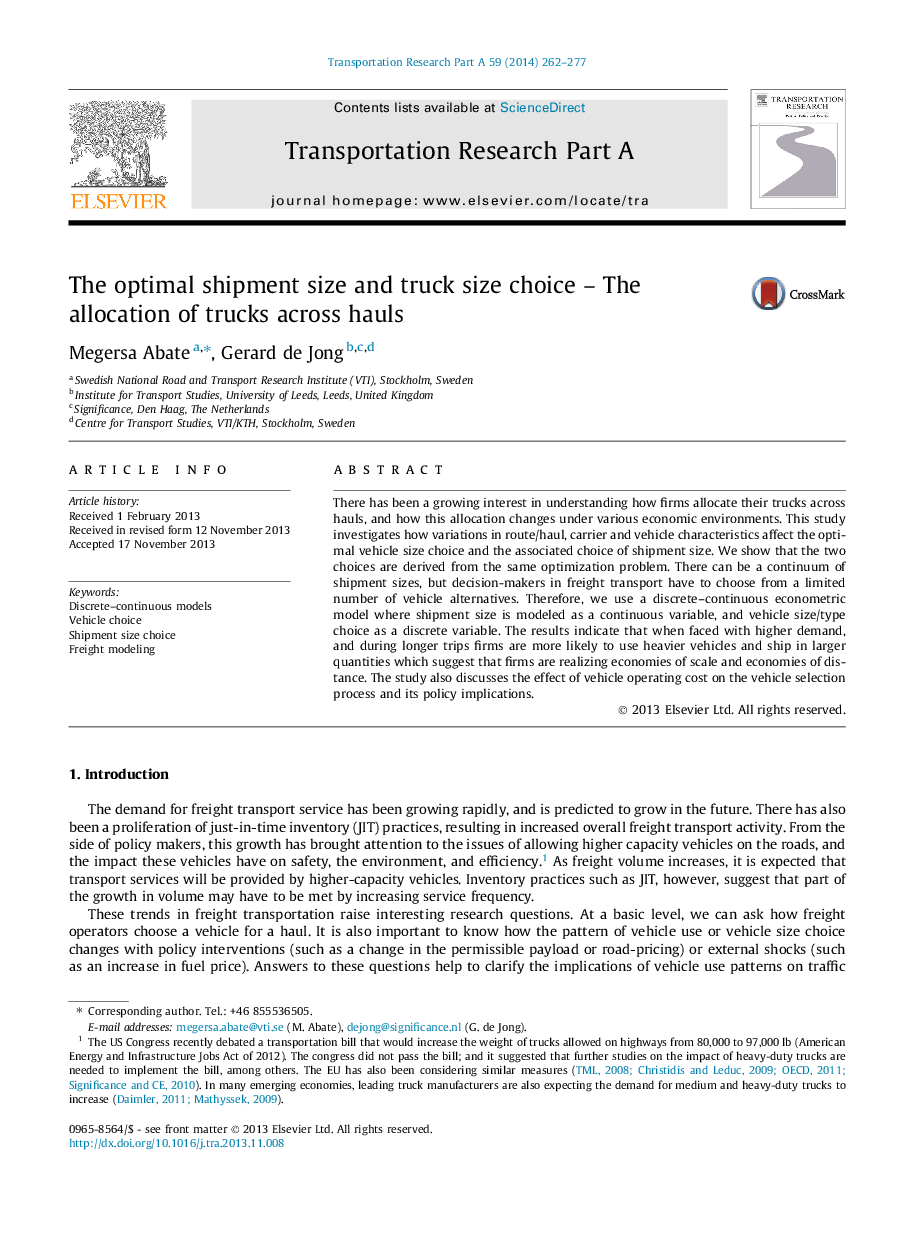| Article ID | Journal | Published Year | Pages | File Type |
|---|---|---|---|---|
| 311255 | Transportation Research Part A: Policy and Practice | 2014 | 16 Pages |
•We jointly model vehicle and shipment size choices in trucking.•We use a discrete-continuous econometric model.•We found the presence of economies of scale and economies of distance.
There has been a growing interest in understanding how firms allocate their trucks across hauls, and how this allocation changes under various economic environments. This study investigates how variations in route/haul, carrier and vehicle characteristics affect the optimal vehicle size choice and the associated choice of shipment size. We show that the two choices are derived from the same optimization problem. There can be a continuum of shipment sizes, but decision-makers in freight transport have to choose from a limited number of vehicle alternatives. Therefore, we use a discrete–continuous econometric model where shipment size is modeled as a continuous variable, and vehicle size/type choice as a discrete variable. The results indicate that when faced with higher demand, and during longer trips firms are more likely to use heavier vehicles and ship in larger quantities which suggest that firms are realizing economies of scale and economies of distance. The study also discusses the effect of vehicle operating cost on the vehicle selection process and its policy implications.
